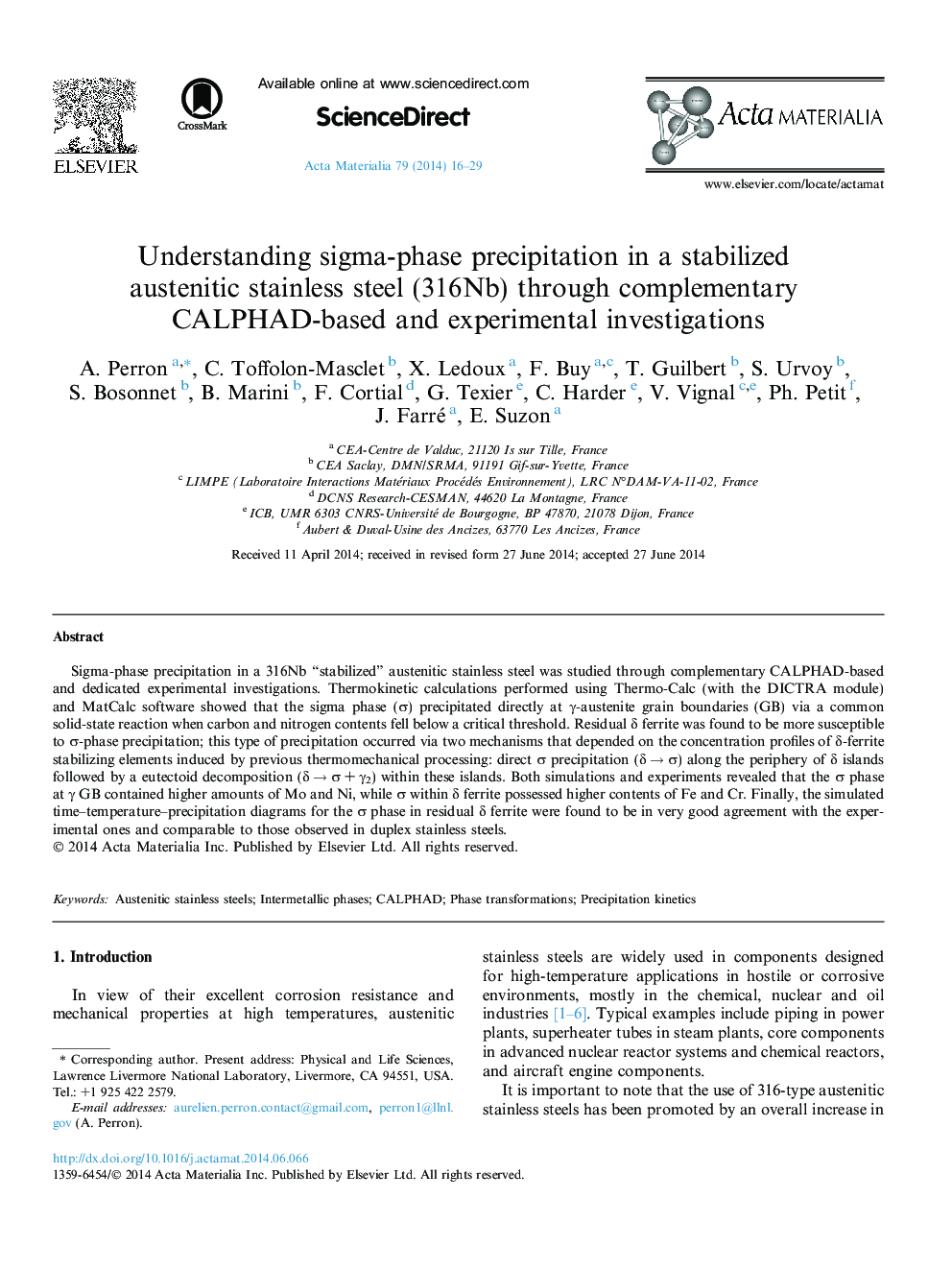| Article ID | Journal | Published Year | Pages | File Type |
|---|---|---|---|---|
| 7880988 | Acta Materialia | 2014 | 14 Pages |
Abstract
Sigma-phase precipitation in a 316Nb “stabilized” austenitic stainless steel was studied through complementary CALPHAD-based and dedicated experimental investigations. Thermokinetic calculations performed using Thermo-Calc (with the DICTRA module) and MatCalc software showed that the sigma phase (Ï) precipitated directly at γ-austenite grain boundaries (GB) via a common solid-state reaction when carbon and nitrogen contents fell below a critical threshold. Residual δ ferrite was found to be more susceptible to Ï-phase precipitation; this type of precipitation occurred via two mechanisms that depended on the concentration profiles of δ-ferrite stabilizing elements induced by previous thermomechanical processing: direct Ï precipitation (δ â Ï) along the periphery of δ islands followed by a eutectoid decomposition (δ â Ï + γ2) within these islands. Both simulations and experiments revealed that the Ï phase at γ GB contained higher amounts of Mo and Ni, while Ï within δ ferrite possessed higher contents of Fe and Cr. Finally, the simulated time-temperature-precipitation diagrams for the Ï phase in residual δ ferrite were found to be in very good agreement with the experimental ones and comparable to those observed in duplex stainless steels.
Keywords
Related Topics
Physical Sciences and Engineering
Materials Science
Ceramics and Composites
Authors
A. Perron, C. Toffolon-Masclet, X. Ledoux, F. Buy, T. Guilbert, S. Urvoy, S. Bosonnet, B. Marini, F. Cortial, G. Texier, C. Harder, V. Vignal, Ph. Petit, J. Farré, E. Suzon,
